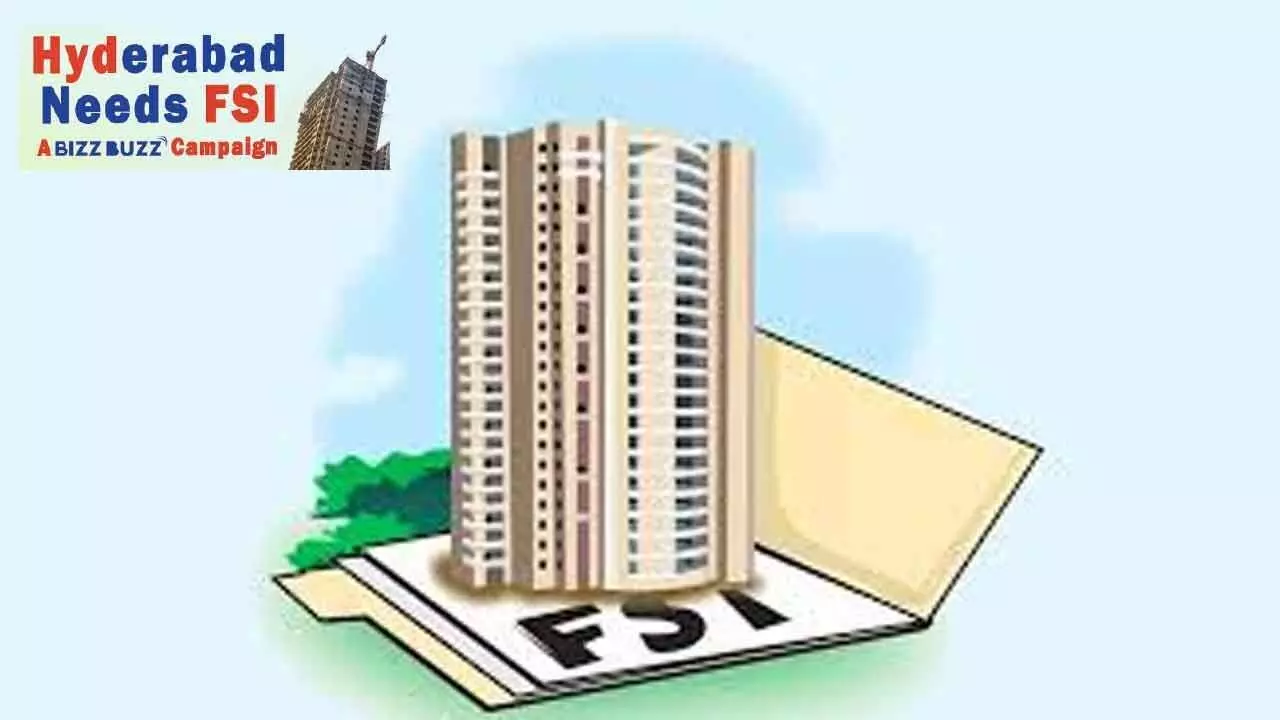Unlike Hyd, No Unlimited FSI In Delhi
Floor space index in the national capital ranges from 1.2 to 5; Stakeholders bat for FSI cap
Unlike Hyd, No Unlimited FSI In Delhi

New Delhi: With an unlimited floor space index (FSI), Hyderabad is turning into a concrete jungle. The authorities in the Delhi-National Capital Region (Delhi-NCR), though flexible regarding FSI, have stipulated varying FSI caps for various localities depending on several factors. In fact, for builders and developers in Delhi-NCR, FSI is not an issue. The stakeholders, however, caution against unrestricted FSI; they say that this would have a baneful effect on natural resources and ecology in general.
Talking to Bizz Buzz, Confederation of Real Estate Developers’ Associations of India (Credai) national president Manoj Gaur said, “the FSI in Delhi-NCR is quite sufficient. It is not an issue in this region.”
The FSI varies from region to region, said Gaur, who is also Chairman & Managing Director of Gaursons Group. “When land is limited, the FSI is higher. The authorities in Delhi-NCR are very flexible on the subject.” This is the reason that the FSI does not bother the realty sector. Depending upon the locality, land use, etc., the FSI can go as high as 5.
The stakeholders, however, pointed out that the FSI cannot be without any cap. A higher FSI is often needed because of the scarcity of land and/or population pressure.
Arjun Nanda, founder & CEO, YHATAW, a leading real estate consultancy firm, said, “By allowing for greater vertical development, higher FSI or FAR can help developers optimize land use and reduce construction costs. This, in turn, could make housing more affordable for a larger segment of the population.”
This also helps lower costs. It is a well-known fact that a major hurdle to realizing the dream of homeownership for many is the increasing cost of housing. Land prices have skyrocketed in recent times, leading to higher prices for flats and apartments. Hence, it’s vertical growth. But experts also caution against unregulated constructions and unlimited FSI. “While vertical growth offers numerous advantages, such as improved infrastructure and economies of scale, it’s crucial to balance development with environmental concerns. Unrestricted FSI or FAR can put a strain on natural resources and have adverse ecological impacts.” They point out that a balance must be maintained between the imperative of housing and ecology.
Explaining FSI
FSI, also called floor area ratio (FAR), is a main term in the real estate business. Being the ratio of the built-up area of a building to the total land area, FSI, in simple words, denotes the maximum floor area a developer is allowed to construct on a specific piece of land. For example, if a locality has the FSI of 1, a 200-metre plot can have a maximum floor area of 200 metres.
According to website of realty major Sobha group, eight factors determine the FSI of an area: zoning regulations (whether the area is residential, commercial, or industrial zones); location (central business districts may have a higher FSI); infrastructure capacity (roads, water supply, sewage systems, and public transport); plot size (larger plots may be granted higher FSI); building height restrictions; environmental considerations (e.g., parks, green spaces, water bodies, areas prone to natural disasters, etc.); public amenities (schools, hospitals, etc.); and government policies.
Accordingly, FSI in Delhi ranges from 1.2 to 3.5. Redevelopment projects can have an FSI of up to 4. In Gurgaon, FSI values between 1 and 1.45. While it is between 1.5 and 2.5 in Ghaziabad, it even crosses 5 in Noida.

